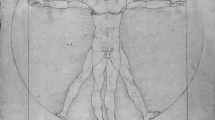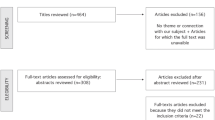Abstract
When Michel de Montaigne criticizes different forms of knowledge in his Essays, geometry gets a decidedly bad rap. Geometrical assertions rely on abstract thought, and the essayist would rather we concentrate on concrete measurements of the world around us. While we have until now made much of the philosophical consequences these criticisms engendered, namely that Montaigne was heavily persuaded by skepticism, we have not looked at the extent to which Montaigne was fascinated by the language of geometry and even, in his writing, obsessed with a particular geometrical debate that dates back to the very first commentaries on Euclid: the necessary, infinite separation between parallel lines and between asymptotes and their hyperbola. Montaigne’s writing produces counter proofs to non-incident lines by forming parallels and asymptotes into demonstrable, everyday actions, expressing them in a more colloquial, French equivalent, and proposing the essay as a parallel figure that challenges theorems of infinite separation. The following will read these moments in Montaigne’s writing as conscious and unconscious instances of his geometrical language and, in Lucretian terms, his swerve [clinamen]. Montaigne’s explicit opposition to lines that never cross, specifically his aversion to the asymptote proposed to him by Jacques Peletier and the parallel lines asserted in Epicurus’ atomist discourse, constitutes a geometrical language in which crossing and contact are moral imperatives that promote social togetherness and exchange.
Similar content being viewed by others
Notes
On the development of mathematics as a discipline with its own university chairs, see Romano (1999).
All references to the Essays are from Montaigne ([1965] 2004) and will be cited in parentheses by book number, chapter number, and page number. This edition distinguishes between three layers of passages: [A] passages written between 1571 and 1580 and published in 1580, [B] passages written between 1580 and 1588 and published in 1588, and [C] passages written from 1588 to 1592 and published posthumously in 1595. All English translations of Montaigne’s Essays will be in parenthetical page numbers from Frame (1958). All English translations of Montaigne’s travel journal will be from Frame (2003).
For more on Lucretius’ clinamen, see Greenblatt (2011).
For more on theophagy, cannibalism, and incorporation, see Guild (2014).
For a deeper exploration of this debate, see Homann (1983).
See also Geiger and Monin (2011).
This appears to be most important in recent studies on how to apply proxemics to teaching practices. See, for example, Jones (2002).
This assessment of the chronology reflects Pierre Villey’s assertion that Montaigne probably read the Vascosan edition of Plutarch’s Parallel Lives from 1565 or 1567. See Villey (1908, 198).
References
Blum, C. (1988). De la “Lettre sur la mort de La Boétie” aux “Essais”: allongeail ou répétition? Revue d’Histoire littéraire de la France, 88(5), 934–943.
Defaux, G. (2002). Montaigne, la vie, les livres: naissance d’un philosophe sceptique—et ‘imprémedité’. Modern Language Notes, 117(4), 780–807.
Geiger, M., & Monin, L. (2011). Michel de Montaigne: Du Discours sur la mort de Montaigne aux Essays. Une Poétique de l’amitié. Revue Romane, 46(2), 267–281.
Greenblatt, S. (2011). The swerve: How the world became modern. New York: W. W. Norton & Company.
Guild, E. (2014). Unsettling Montaigne: Poetics, ethics, and affect in the essays and other writings. Cambridge: D. S. Brewer.
Homann, F. A. (1983). Christopher Clavius and the renaissance of Euclidian geometry. Archivum Historicum Societatis Iesu, 52, 233–246.
Jones, T. S. (2002). Nonverbal communication for educators resource site. http://www.creducation.org/resources/nonverbal_communication/proxemics.html. Accessed 10 Apr 2016.
Loget, F. (2002). Jacques Peletier du Mans mathématicien: l’angle de contacte. Nouvelle Revue du XVIe siècle, 20(2), 37–55.
MacPhail, E. (2013). Neighbors: Ethnocentrism in Antiphon and Montaigne. Acta Antiqua Academiae Scientiarum Hungaricae, 53(4), 399–408.
Montaigne, M. (1962). A. Thibaudet, & M. Rat (Eds.), Oeuvres completes. Bibliothèque de la Pléiade. Paris: Gallimard.
Montaigne, M. ([1965] 2004). Essais. P. Villey (Eds.). Paris: Presses Universitaires de France.
Montaigne, M. (2003). The complete works (D. M. Frame, Trans.). New York: Everyman’s Library.
Plutarch, L. M. (1951). Vies des Hommes Illustres, Grecs & Romains […] (J. Amyot, Trans.). Paris: Gallimard.
Regosin, R. (1973). “The matter of my book”: Montaigne’s essays as the book of the self. Berkeley: University of California Press.
Rigolot, F. (1983). Montaigne’s purloined letters. Yale French Studies, 64, 145–166.
Romano, A. (1999). La contre-réforme mathématique. Constitution et diffusion d’une culture mathématique jésuite à la Renaissance. Rome: Ecole Française de Rome.
Rommevaux, S. (2006). Un débat dans les mathématiques de la Renaissance: le statut de l’angle de contingence. Le Journal de la Renaissance, 4, 291–302.
Villey, P. (1908). Les Sources et l’évolution des Essais de Montaigne. Tome premier. Paris: Hachette.
Author information
Authors and Affiliations
Corresponding author
Rights and permissions
About this article
Cite this article
Calhoun, A. Montaigne’s Swerve: The Geometry of Parallels in the Essays and Other Writings. Neophilologus 101, 351–365 (2017). https://doi.org/10.1007/s11061-017-9519-7
Published:
Issue Date:
DOI: https://doi.org/10.1007/s11061-017-9519-7




